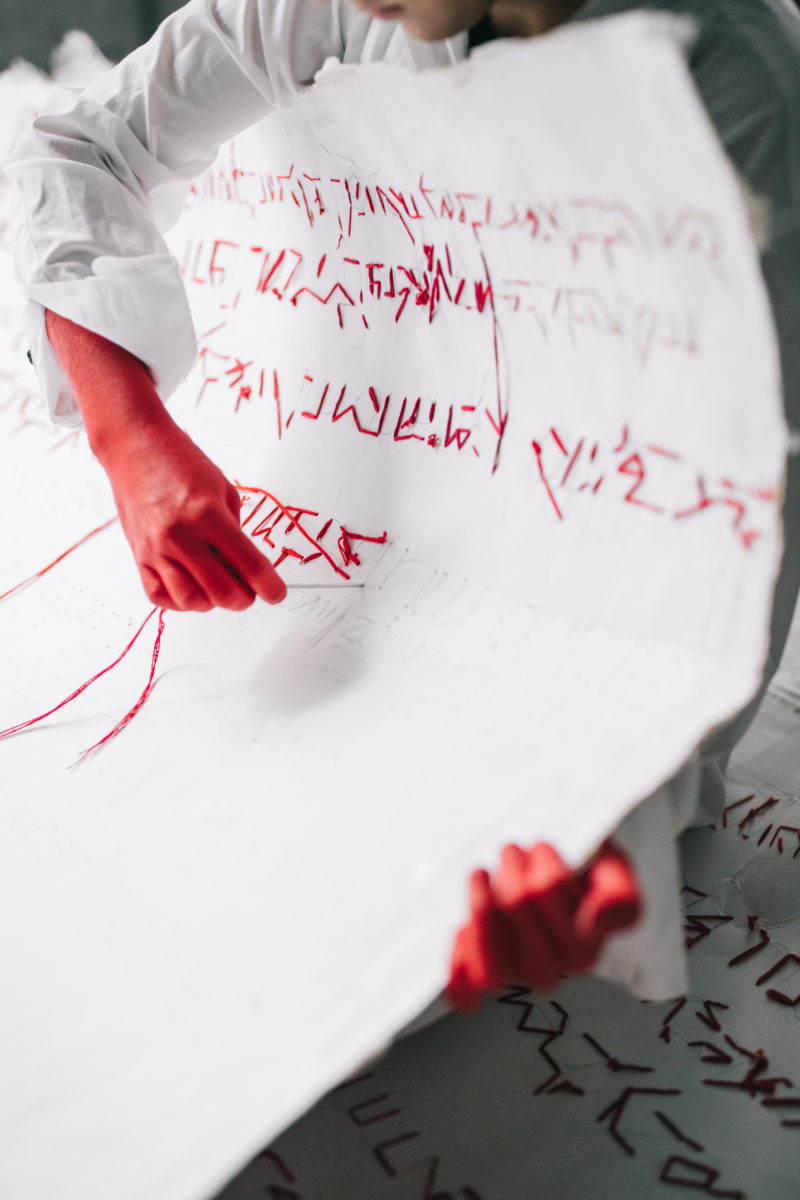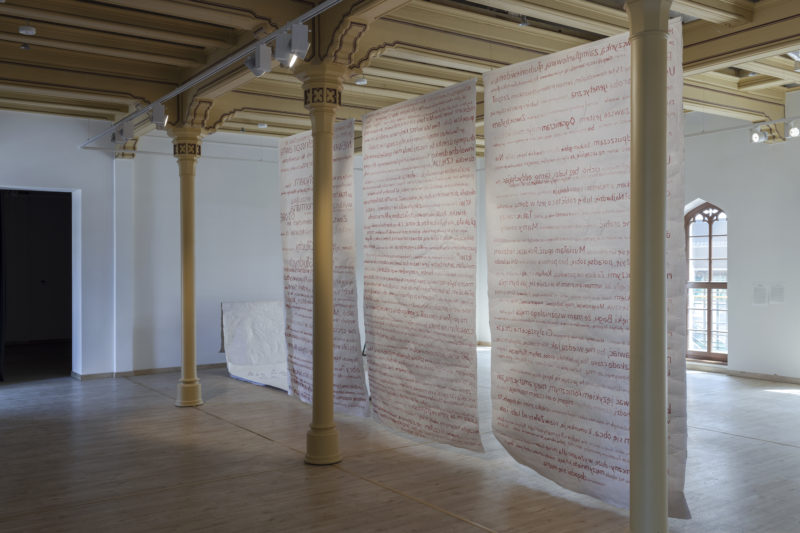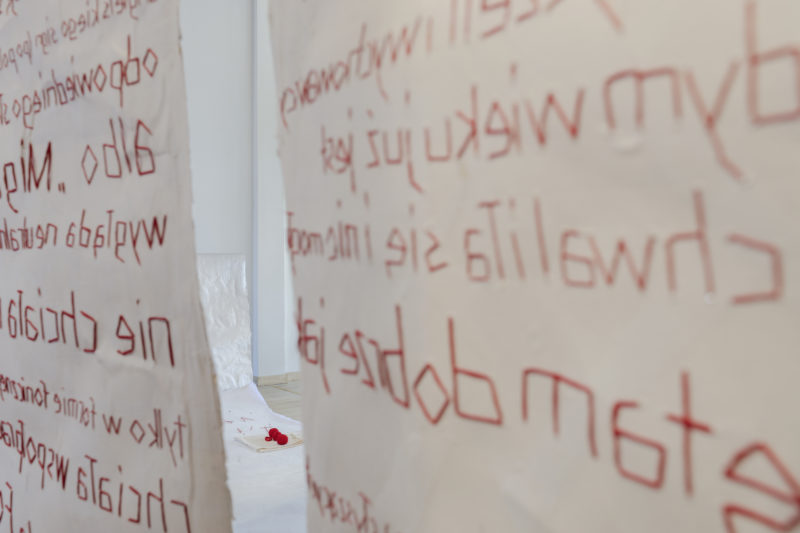
Disruptions in Blood
Viktoriia Tofan


Victoria Tofan’s project deals with the problem of belonging (identity) and foreignness. In the times of crisis and insecurity, causing a growing need for new communities (national, economic, of interests and safety), these are issues which arouse renewed interest. “In order to be united, things must necessarily be divided; whenever we say us, someone must always be excluded at all costs,” explains Achille Mbembe in his Politics of Enmity. In this way, in the shadow of familiarity, otherness appears. In her Disruptions in Blood, Victoria Tofan uses a stronger word for the shadow. Foreignness is an unplanned consequence of what is familiar, known or desired. A consequence with far-reaching implications for many people. The artist addresses identity issues concerning persons nominally belonging to the circle of us. Induced by her own experience of strangeness, she decided to use the framework of Naked Nerve to work in the community of the deaf. As a Ukrainian, Victoria Tofan chose the group because of discrimination and marginalization of this part of the Polish population within its own culture. She became fascinated by the mistakes deaf people make when learning written and spoken Polish (not the sign language). She found in them similarities to the processes of assimilation and adjustment which she herself is subject to as a foreigner in Poland and an artist functioning in the field of Polish art. She noticed how violent the process is, how much effort it requires, and finally – to what extent it depends on deformations of one’s own beliefs and sense of self.
Victoria Tofan’s work has the form of embroidery on hard materials – reinforced paper, primed canvas. “When embroidering, I had to “damage” the paper, distort it, perforate it, in order to tell the story,” explains the artist. The effort she put into the work and brutal character of the final form symbolize the destruction of identity, repeated attempts to overcome difficulties in order to “become at least a bit understandable to others”. Victoria Tofan calls the resulting systems of signs an alphabet.
“A new alphabet, new phonetic language was created. It resembles the secret language of children, giving them a sense of security and creating a world which lets them hide from other people. The theme may be understood not only in the categories of children/adults, deaf/hearing, migrant/native, but also in the broader context of one of us/one of them. And it is precisely in this case that language is one of the many carriers of the “private homeland”, as language alone can take over the homeland-creating function. It is capable of generating a sense of belonging and “spatiality”. Written language, in turn, contributes to the development of culture, not only on the level of an individual who, using the language – a culture code – develops personally through self-identification, but also through the possibility of communicating with others on the social scale. Written language reinforces the impact of the visual message through its distinctiveness and usefulness, and the phonetic script enhances the visual power of words. It becomes immensely effective then, working in any of those fields, both as a medium of emotional messages and means of communication. In this way, language becomes a foundation and building material of the new world”.
Victoria Tofan is an artist, initiator and co-ordinator of artistic events, originally from Ukraine. She graduated in Painting from the Eugeniusz Geppert Academy of Fine Arts in Wrocław (diploma with honours, 2019) and the Academy of Fine Arts in Kiev. She lives and works in Wrocław. The artist is mainly involved in painting, in which she combines abstract art and the experience of painterly matter with the theme of human life and mortality. She is interested in the culture of the deaf and sign language. She co-ordinates BWA Studio Gallery tours conducted in the Polish sign language. She collaborates with the Katarynka foundation in “Adapter. Culture Station”, a project co-financed by the Ministry of Culture and National Heritage. A participant in BWA Wrocław’s “Master’s Studio by Joanna Rajkowska”, she also initiated and co-ordinated the project “Experience of Silence” selected for the 23rd Microgrants edition.